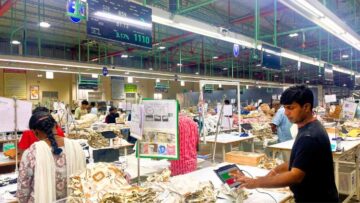
A joint report by Fashion for Good and Boston Consulting Group has revealed that next-generation materials such as textile-to-textile recycled polyester and lab-grown cotton, will hold 8 per cent of the global fibre market by 2030, a significant jump from the current 1 per cent share.
The report indicates a significant shift towards sustainable fibre demand in the apparel sector amid increasing circularity challenges. The report, titled Scaling Next-Gen Materials in Fashion: An Executive Guide, predicts that textile-to-textile recycling will be a key driver of this growth across man-made cellulosic fibres, natural fibres, and synthetics.
While these materials are still in early stages of commercial availability, research continues to focus on improving their technological capabilities and cost-effectiveness. The report also highlights the potential financial benefits for fashion brands that integrate these advanced materials. It suggests that brands could see a 4 per cent reduction in their cost of goods sold (COGS) over five years by adopting these innovative textiles. This strategic move is not only cost-effective but also essential for companies seeking to maintain their market position.
Fashion for Good Managing Director, Katrin Ley, emphasised that next-generation materials are no longer just an opportunity but a business imperative for the fashion industry. She stressed that realising this opportunity requires both individual and collective action across demand, cost and capital.
Despite the projected growth, the report cautions that it may not be sufficient to meet the industry’s increasing demands, which could be driven by stricter regulations, climate-related supply chain disruptions, and evolving consumer preferences. The report provides a strategic framework for industry leaders to overcome these challenges, emphasising the importance of both individual brand efforts and collaborative industry initiatives.






